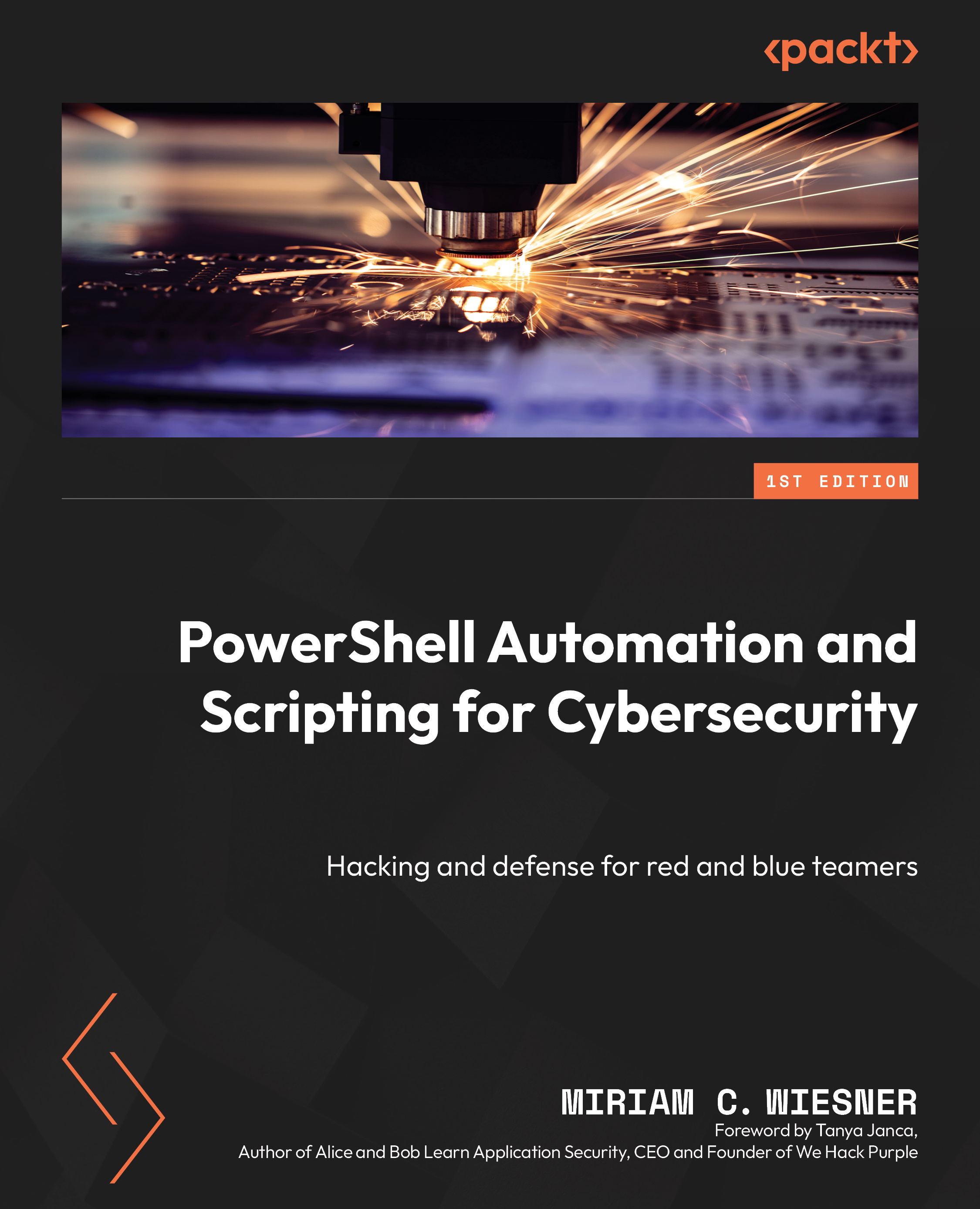Conventions used
There are a number of text conventions used throughout this book.
Code in text: Indicates code words in text, database table names, folder names, filenames, file extensions, pathnames, dummy URLs, user input, and Twitter handles. Here is an example: “Export one or more aliases with Export-Alias – either as a .csv file or as a script.”
A block of code is set as follows:
if (<condition>)
{
<action>
}
When we wish to draw your attention to a particular part of a code block, the relevant lines or items are set in bold:
if ($color -eq "blue") {
Write-Host "The color is blue!"
}
elseif ($color -eq "green"){
Write-Host "The color is green!"
}
Any command-line input or output is written as follows:
> ("Hello World!").Length
12
Bold: Indicates a new term, an important word, or words that you see on screen. For instance, words in menus or dialog boxes appear in bold. Here is an example: “Configure the Turn on Script Execution setting, and choose the Allow local scripts and remote signed scripts option.”
Tips or important notes
Appear like this.
































































